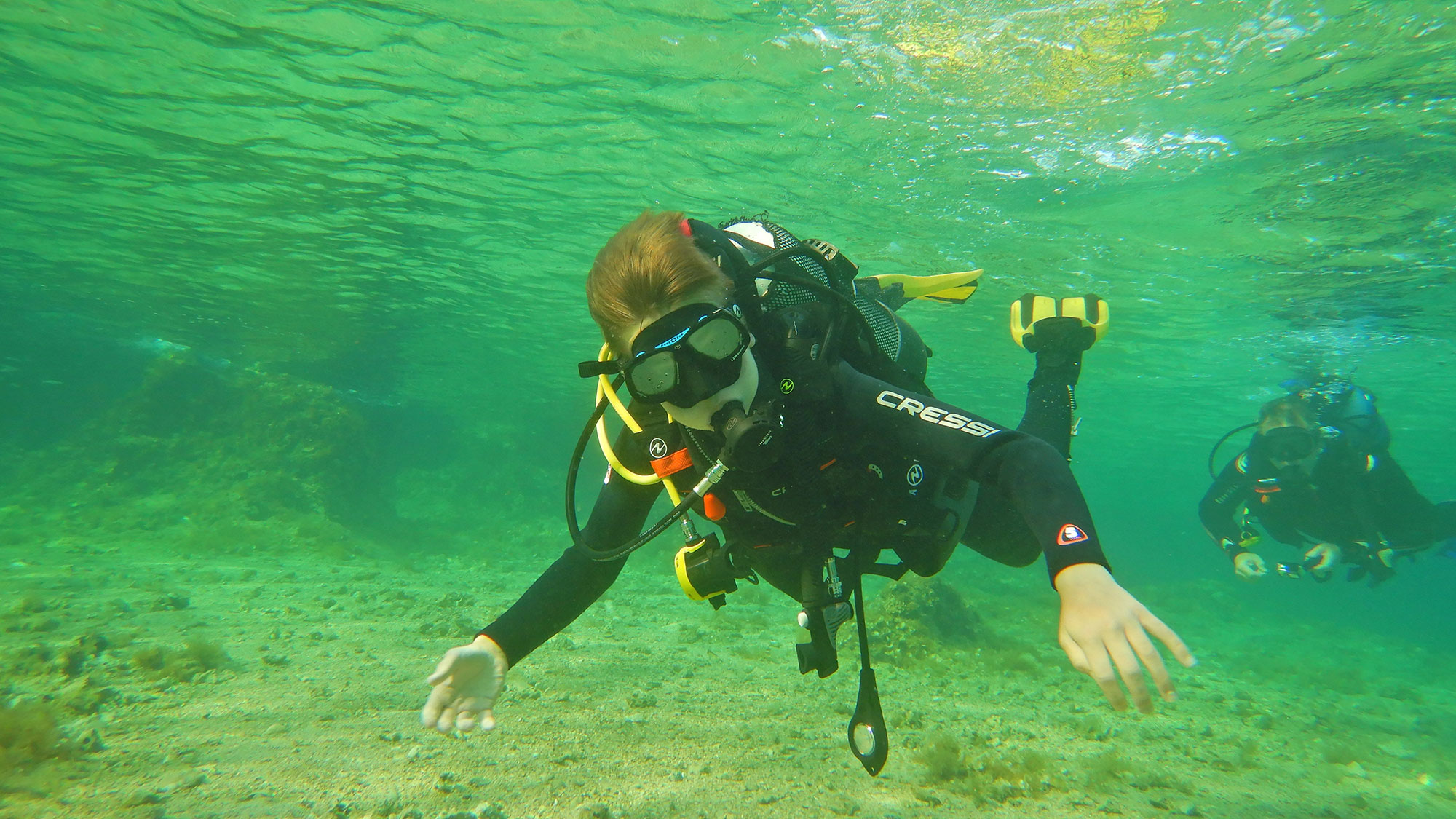BUOYANCY – Why is it so important?
Probably the first buoyancy control experience for most of us came in the pool. While swimming in the pool, you realize that holding your breath in your lungs will keep you afloat, and when you exhale deeply, you find that you will sink.
Assuming you maintain a normal breathing rhythm and have no problem with equalizing the pressure in the body cavities, neutral buoyancy is paramount in scuba diving.
Buoyancy control in scuba diving
On our first entry into the pool / seawater, we learned how to determine the right amount of lead and what types of buoyancy there are.
Positive buoyancy = all floating objects
Negative buoyancy = all objects sinking to the bottom
Neutral buoyancy = objects floating somewhere between the surface and the bottom
The right amount of lead is one that allows us to float at eye level with the vertical position of the body. In doing so, the buoyancy compensator is exhausted while retaining air in the lungs. When the air is released from the lungs, they should sink. That is then the right amount of lead we need.
During a dive, if only by breathing we manage to control the buoyancy in a way that when we inhale, we rise slightly, and when we exhale slightly, it means that our buoyancy is ideal at that moment. We say, it’s “perfect neutral buoyancy.”
Excessive use of hands and fins is a sign that there are problems with establishing / maintaining neutral buoyancy.
What affects the buoyancy?
Changing the depth, as well as the pressure, necessarily leads to a change in body volume. The diving suit is compressed when exposed to increasing pressure, so air must be added to the buoyancy compensator to maintain neutral buoyancy when diving.
On emergence, body volume increases as ambient pressure decreases and air in the buoyancy compensator expands. At the same time, our neoprene suit is also expanding, and suddenly we become positively navigable (lightweight). We need to recognize that moment in time and start blowing the buoyancy compensator properly to maintain neutral buoyancy and prevent it from escaping to the surface.
Buoyancy control is one of the most important skills you will learn while diving.
Safety and air consumption
Maintaining a neutral buoyancy will improve your safety, reduce air consumption, reduce stress and thus fatigue. Not only does it improve diving enjoyment, it also helps protect underwater flora and fauna by avoiding contact with the seafloor and objects below the surface.
Negative facts caused by poor buoyancy:
Poor buoyancy control is mainly cited as the cause of many diving incidents.
- Poor airworthiness control can lead to yo-yo diving (up and down) and thus to an increased risk of decompression sickness.
- Poor airworthiness control increases higher ventilation (consumption) of air and thus greater saturation of nitrogen in the body = increases the risk of decompression diseases.
- Problems with the use of buoyancy compensators can lead to rapid ejection to the surface, and thus, with an increased risk of decompression sickness, barotraumatic lung injuries can occur.
- Problems with maintaining a neutral buoyancy are generally characteristic of beginner and less experienced divers with a small number of dives.
- Maintaining neutral buoyancy problems generally makes diving difficult, uncomfortable and risky.
Conclusion:
It is very important to know how to use the buoyancy compensator and scuba diving equipment in general.
A lead weight belt or integral weight system is essential for successful neutral buoyancy, but no overloading should occur.
Practice makes perfect!
This is why at the Venus diving center we pay special attention to the control of neutral buoyancy and maintenance.
Already with the Try dive program, even if it is only one or two trial dives, it is not possible to leave shallow water and go deeper if you do not master the basics of establishing a neutral buoyancy.
Safety stop issues:
The rule is that when one diver in the group has 50-70 bars (as agreed), we start to ascend and stop for 3 minutes at 5 meters. we come up to the surface with a much smaller amount of bubbles in the body than we would have if we didn’t do that pause.
The fact is that some divers have consumed 75% of the air from the bottle and therefore, the bottle is lighter than at the start of the dive. So at that point they are easier.
If we took the wrong amount of weight before diving, there could be some buoyancy issues at that point. There is a danger that buoyancy will throw us beyond our will.
Scuba Equipment:
It is impossible to have “your weight” that does not change.
Different type and thickness of neoprene suit, use of hood and boot, aluminum or steel bottle, larger or smaller bottle volume, fresh or salt water … etc … These are all factors that influence the amount of lead you need.
Conclusion:
Always check and test complete scuba equipment and make sure we have the right amount of lead we need.
Ivica Žižak
Padi MSDT

